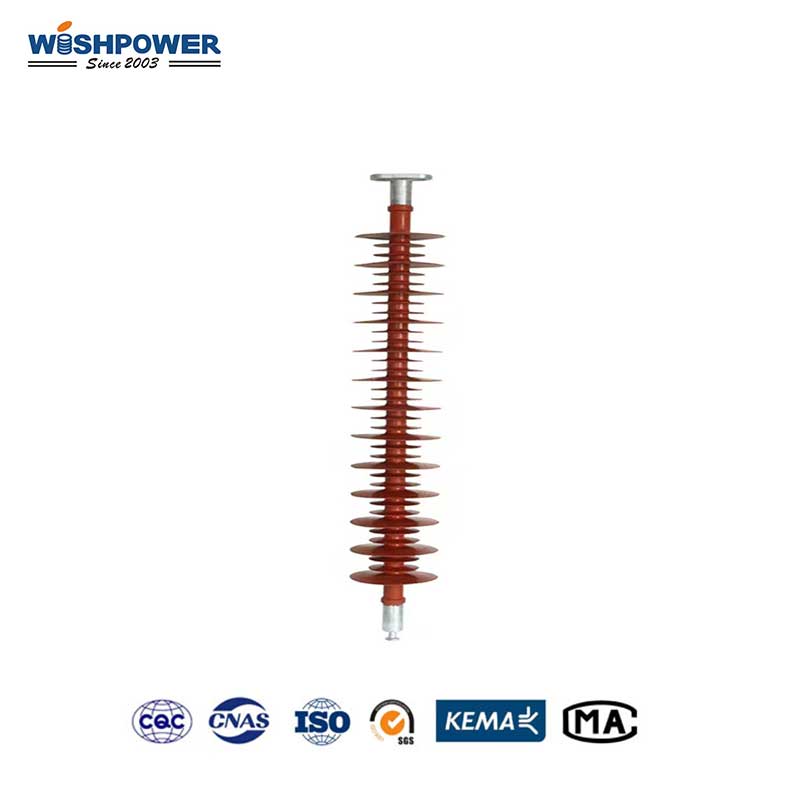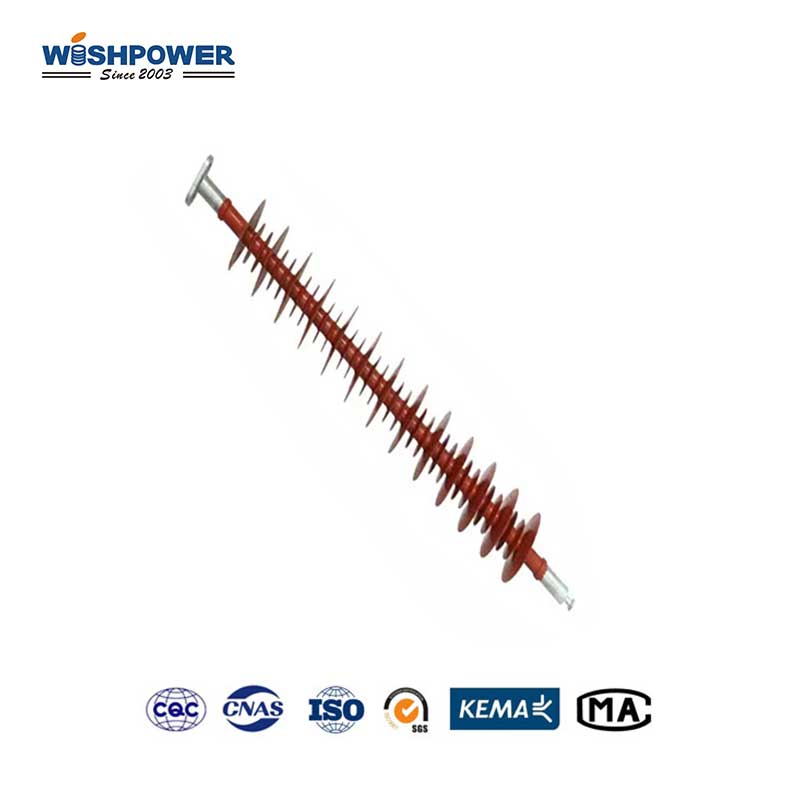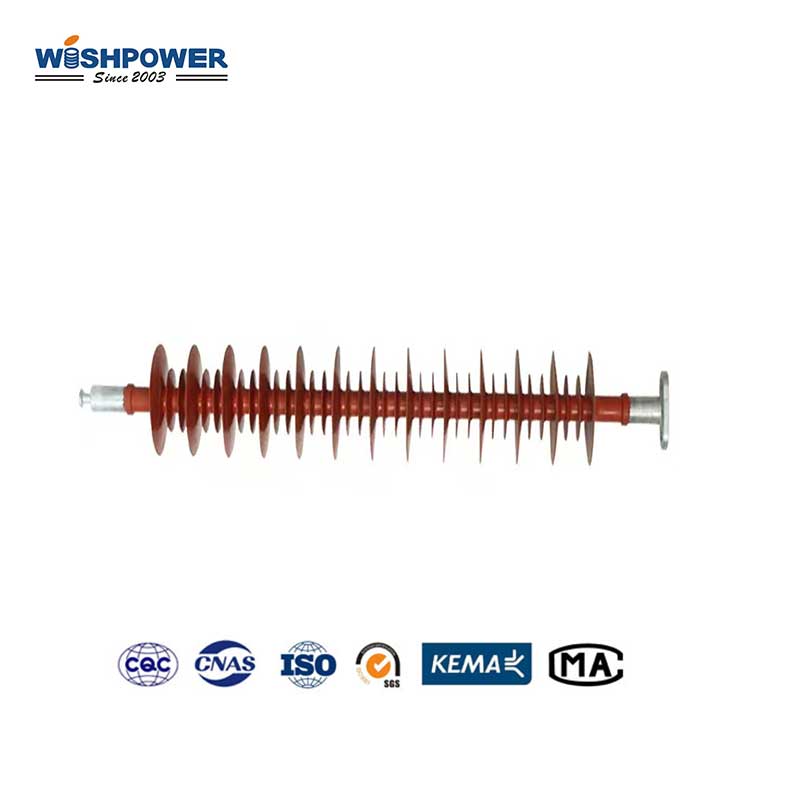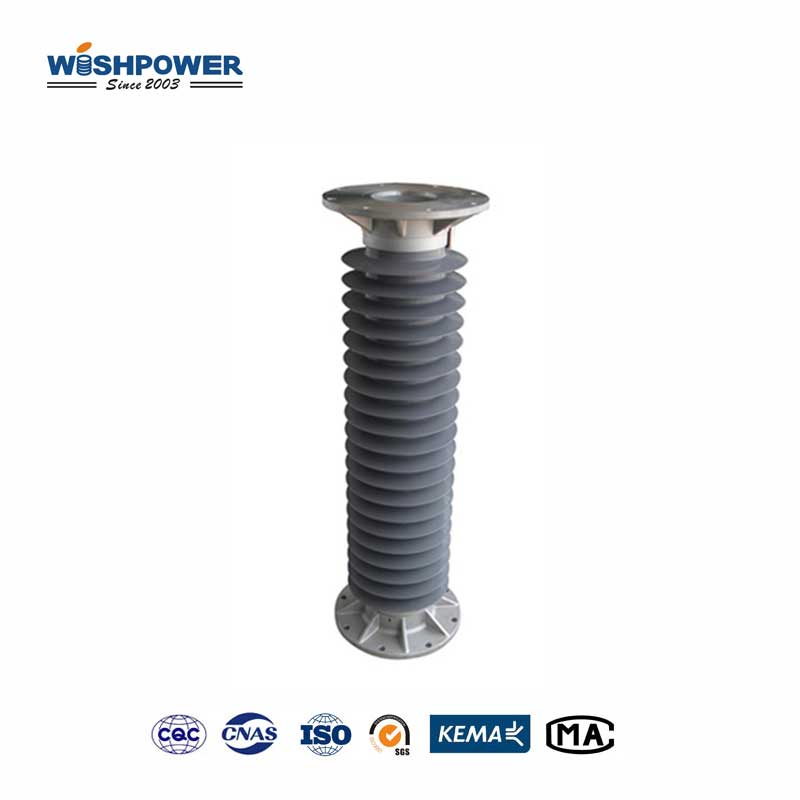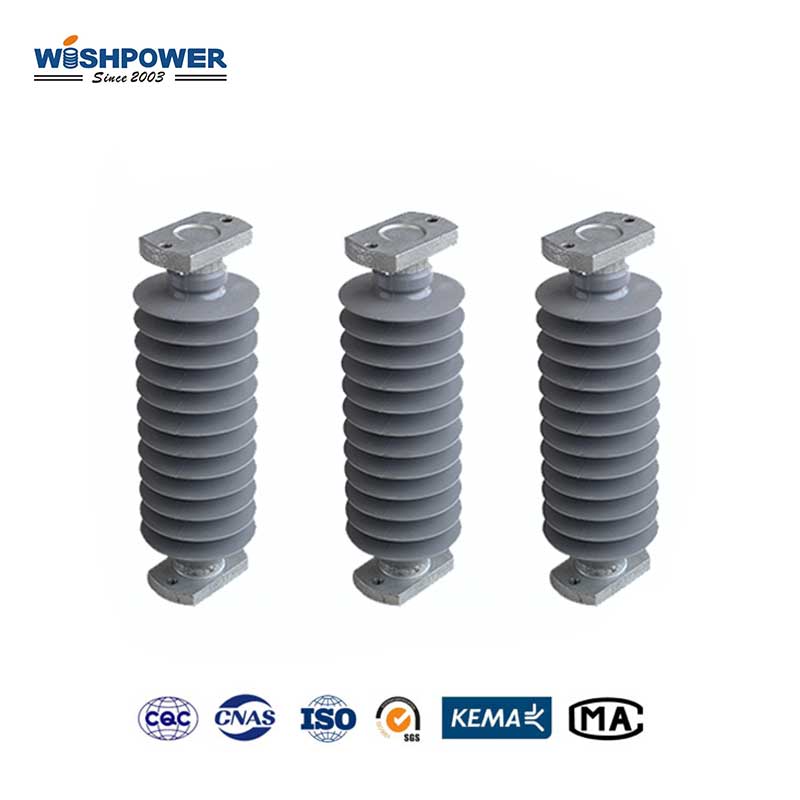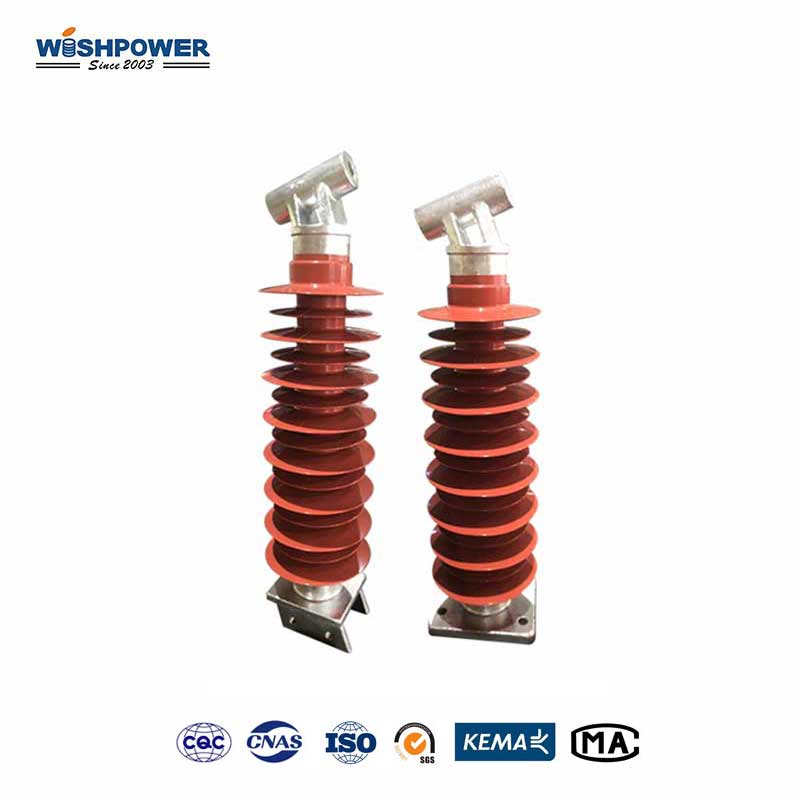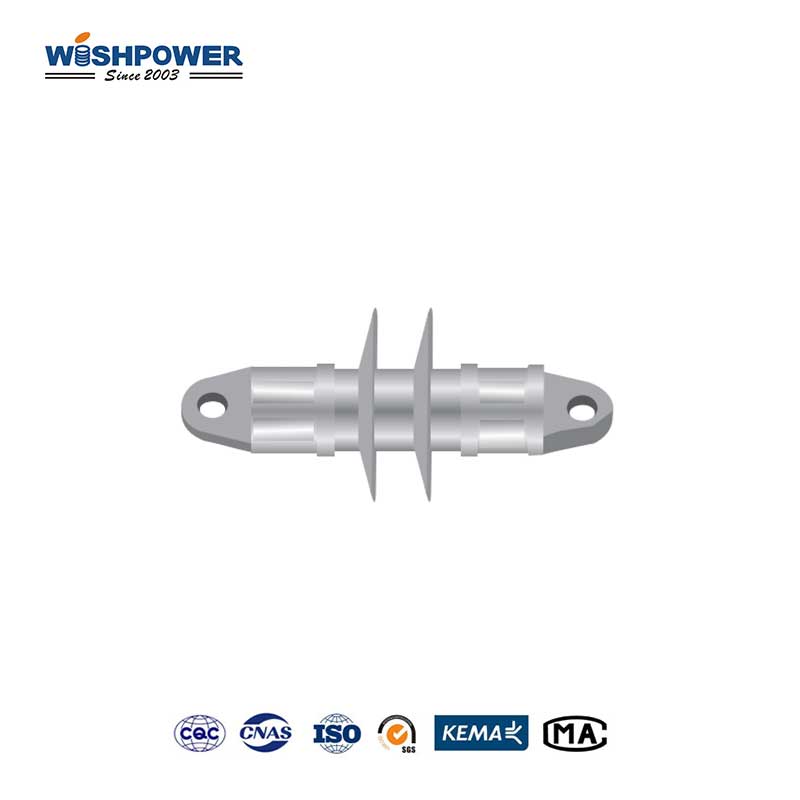Specification
| Type of Insulator |
FYTX-66 70-0.4-NT |
| Specified Voltage |
66 kV |
| Specified Mechanical Tensile load |
70 kN |
| Specified bending Withstand Load |
0.4 kN |
| Connection Structure Mark |
16 |
| Section Length |
940±15 mm |
| Min. Arcing Distance |
700 mm |
| Big Shed Diameter |
190 mm |
| Min. Nominal Creepage Distance |
1900 mm |
| Deflection Under Bending Load |
≤200 mm |
| Lightning Impulse Withstand Voltage(Peak Value) |
≥410 kV |
| Power Frequency Withstand Voltage Min.Wet(RMS) |
≥185 kV |
| Reference Weight |
8.7 kg |
The table above is just one of our product parameters. If you want more information, please get in touch with info@wishpower.net or download the file below.
Wind Deflection Insulators are specialized components required in overhead transmission lines. They are mostly applied to minimize conductor motion due to wind forces while maintaining the conductor at safe operating limits and minimizing the chances of electrical failure due to conductor oscillations. Wishpower is one of the leading companies in this industry, and we offer a wide range of high-quality products and solutions.

What is the Wind Deflection Insulator?
Wind Deflection Insulator is a specialized component used in overhead power transmission lines to stabilize conductors against wind-induced movement. It is designed with a specific shape or configuration to minimize conductor sway and prevent excessive deflection under windy conditions. This helps maintain safe distances between conductors and structures, reducing the risk of electrical faults and ensuring uninterrupted power transmission. These insulators are typically constructed from durable materials like composite materials, ceramics, or specialized glasses. Such materials offer high mechanical strength and excellent weathering characteristics necessary for the structures to resist such conditions as high winds, storms, and fluctuating temperatures among others. In this capacity, it is pivotal to guaranteeing the robustness and solidity of transmission networks and particularly the attainability of these necessities in threatening climate fringe zones. Since they minimize conductor movement due to wind, they minimize the steadiness of electrical performance and hence, cut down maintenance costs, which eventually improves the efficiency of the electrical grid.
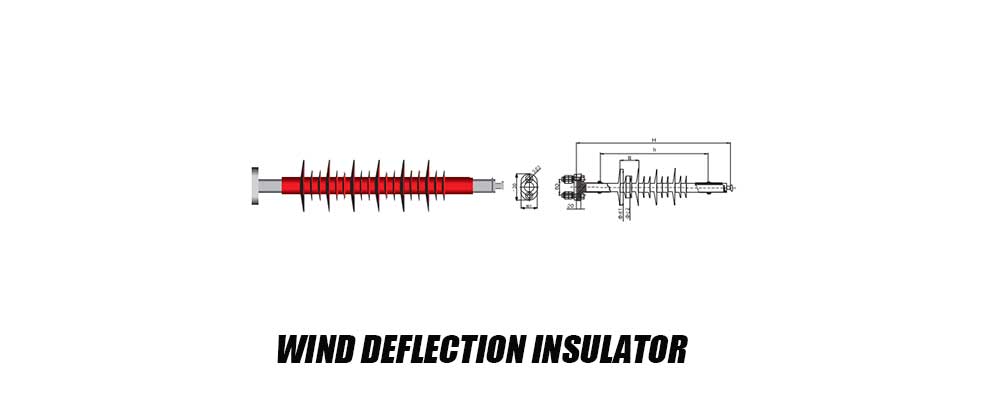
Windproof Insulators VS Wind Deflection Insulators
Similarities:
Both are used in power transmission lines, especially in areas where protection from wind is required. They are usually made of durable materials such as composites, ceramics, or specially designed glass to provide adequate mechanical strength and weather resistance.
Differences:
Windproof Insulators
Designed primarily to stabilize structures and equipment in power transmission lines to prevent damage or collapse in windy conditions. Usually, they have a larger support structure to stabilize and support the entire transmission line system. Focuses primarily on overall structural stability and wind resistance to protect power transmission lines from extreme wind speeds.
Wind Deflection Composite Insulator
They are specially designed to reduce the deflection or swaying of conductors in power transmission lines under wind. Its shape and design help reduce contact between conductors, thereby reducing the potential risk of short circuits. Usually, a special shape or configuration is designed to reduce the lateral displacement of conductors under the wind, ensuring that the conductors remain within safe operating ranges. Focuses primarily on conductor stability and avoiding unnecessary contact between conductors, thereby reducing the risk of failures that may occur due to wind-induced conductor deflection.
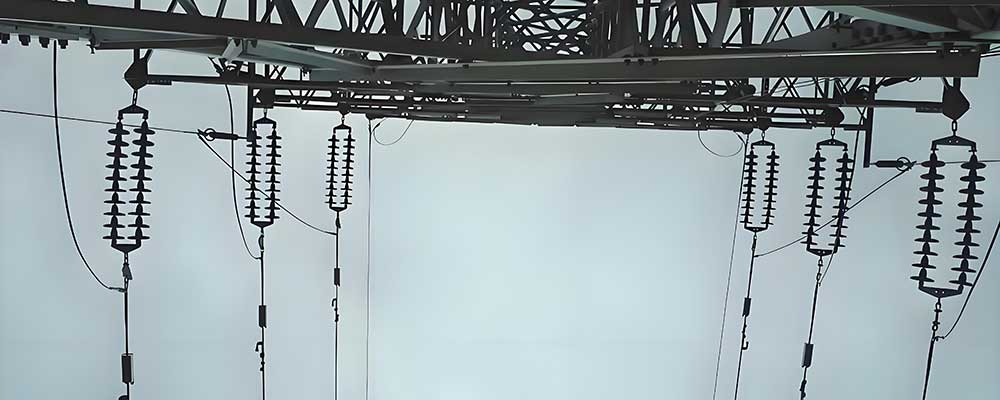
Unique Features
- Reduced Conductor Displacement Risk:
Wind sway prevention insulators are specifically designed with shapes and configurations that minimize the lateral movement of conductors under strong wind forces. This design helps to keep conductors within safe operational limits, reducing the risk of contact between conductors and potential electrical faults.
- Enhanced Operational Safety:
By maintaining stable positioning of conductors, these insulators contribute to the overall safety and reliability of power transmission lines. They mitigate the potential hazards associated with conductor sway during adverse weather conditions.
- Minimized Maintenance Needs:
Wind deflection insulators can help decrease the number of maintenance actions that need to be carried out on the power distribution system. This is achieved by reducing the amount of extra stress brought to the tracks by the movement of the conductor hence reducing the rate at which tracks and other related structures are likely to get damaged.
Exhibition

Certificate

Hot Tags: Wind Deflection Insulator, Composite Insulator, China, manufacturers, ISO factory, wholesale, KEMA, high quantity, best, price, low to high voltage






